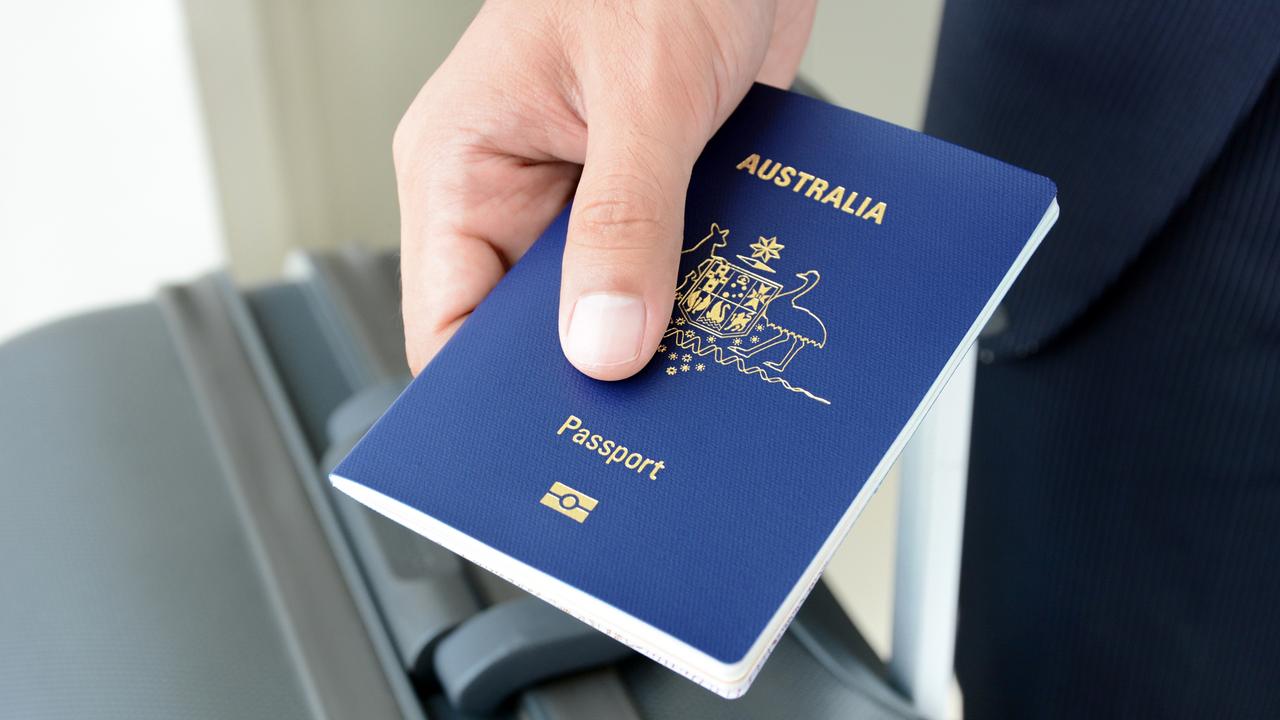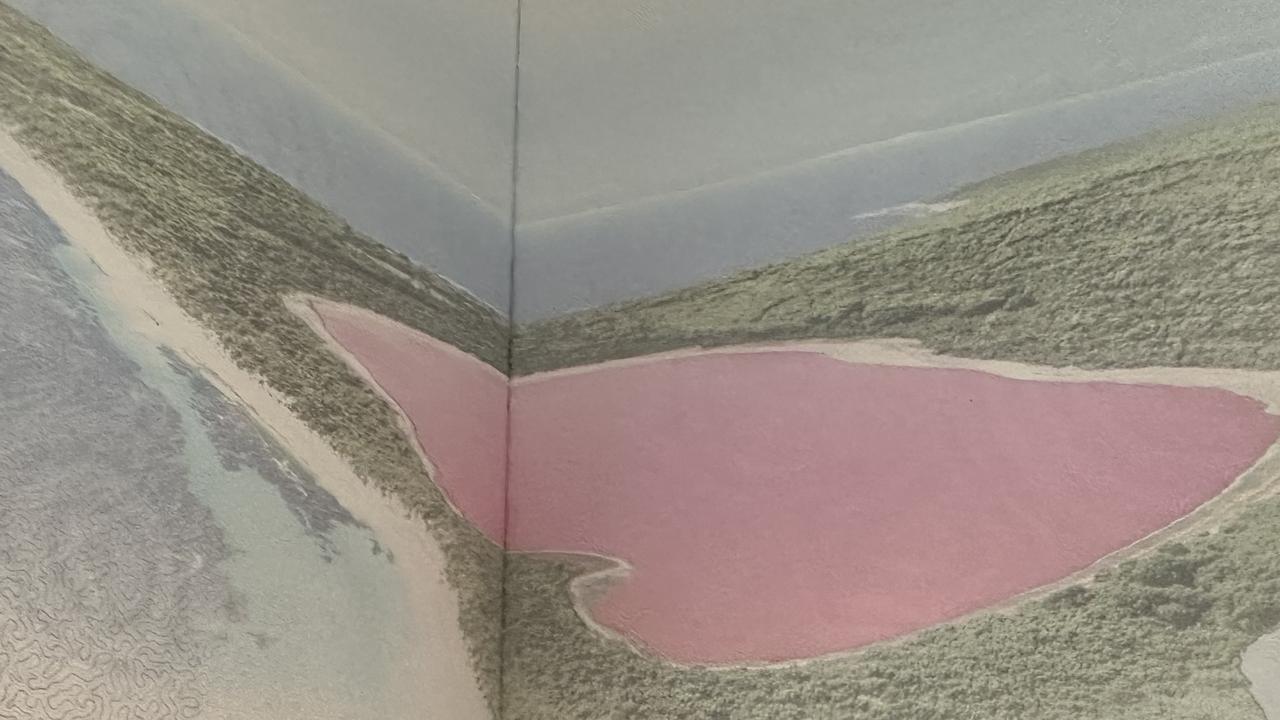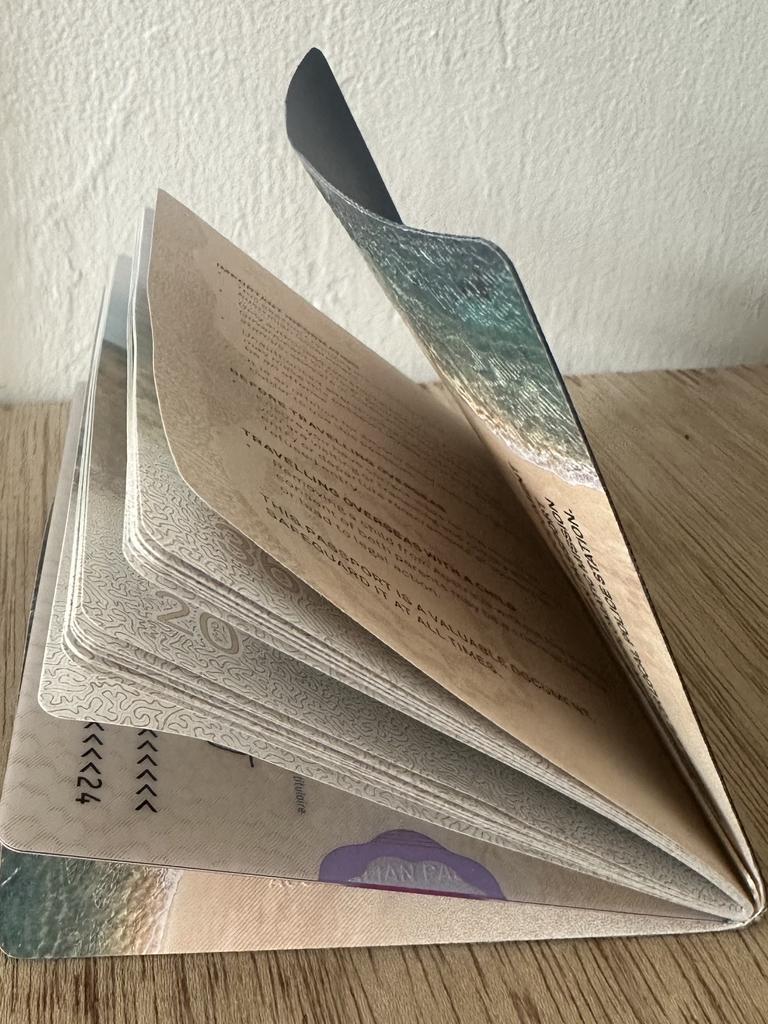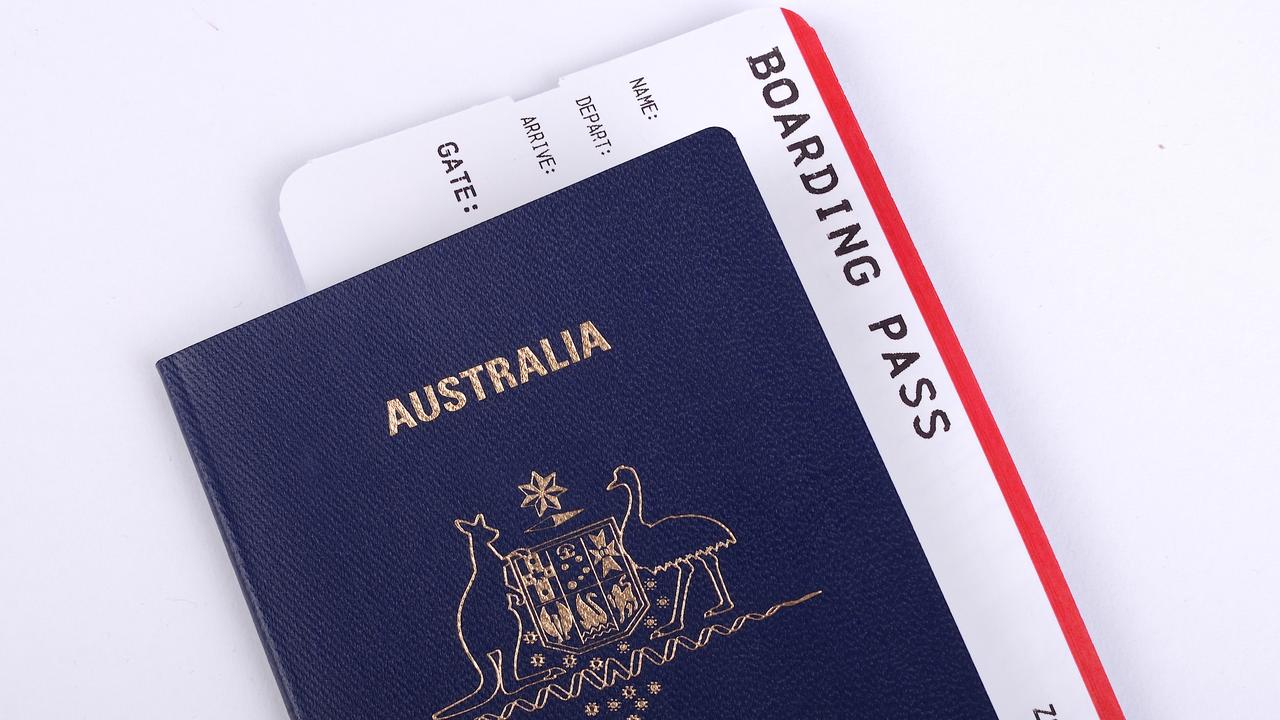Cool hidden security features in latest Australian passport
If you have a recently issued passport, take a closer look. At first glance, the 17 iconic Australian landscapes are beautiful to behold. But hidden shapes start to appear under a certain type of lighting

READING LEVEL: GREEN
If you recently got an Australian passport, you might want to take a closer look at it. Not only does it give you the opportunity to explore the world around you, it also has some pretty cool features – including hidden elements that only become visible under ultraviolet light*.
In fact, the R series passport, issued from September 2022 onwards, has a clever blend of cutting-edge security and artistic storytelling, offering a “tactile* journey” through Australia’s landscapes, culture and innovation*. The Australian passport office describes it as “one of the world’s most secure and beautiful travel documents”.
The 17 visa pages* showcase 17 iconic* Australian landscapes, each transforming into a nightscape under ultraviolet light, revealing hidden native fauna*.

Under ultraviolet light, other elements and security features of the passport become visible. On the visa pages, the sky in each Australian landscape becomes a unique nightscape, and a local species of native fauna appears. The photo page turns bright red under ultraviolet light and a red and white wattle is visible on the inside front cover. The image of Uluru transforms to a nightscape, showing the night sky, stars and native fauna.
The stitching that binds the passport is also interesting. In regular light, the thread looks like the earthy tones of charcoal, ochre, and white, reflecting traditional Indigenous colours. But, under UV light, it transforms into the red, yellow, and black of the Aboriginal flag — a subtle yet powerful acknowledgment of Australia’s First Nations’ heritage.

Indigenous art is woven throughout, with works by Uta Uta Tjangala and Michael Nelson Jagamara AM featured across multiple pages, including the polycarbonate* data page* and security features page.
The R Series photo page is made from polycarbonate which is more durable* than laminated paper. “It is less likely to tear and prevents other minor damage that can cause difficulties for travellers when crossing borders,” claims the passport office.

But despite the best efforts, the latest version of the Australian passport does come with some issues.
At $412 for people aged 16 and over and $208 for people who are under 16, Australia has one of the world’s most expensive passports. And although they’re paying top dollar, Aussies have found their pricey new passport needs to be stored beneath very heavy books when it’s not in use, to stop the corners from curling.
Several Australian tourists have recently posted photos of their passports to online forum Reddit after the corners of the covers started curling upwards while they were travelling overseas.


“My mind is blown,” one user posted. “Our passport is the most expensive in the world and the quality of them is horrendous.”
Some Reddit users were concerned they might be refused entry to other countries because their passports were in such poor condition.
Another complained that after doing just two trips with it and keeping it in a safe place their passport already had several loose pages.
Others claimed to have received passports that have pages “holding on by the merest thread” without having even been used and worrying “this is going to cause havoc with going to Bali given how they can refuse you for even minor defects.”

According to the Department of Foreign Affairs and Trade (DFAT), “You should replace your passport if it has more than reasonable wear and tear.”
DFAT also states that “even minor passport damage can stop you from travelling.”
“Damage that might require you to replace your passport includes water damage, unofficial markings on the data page, missing visa pages or tears,” DFAT states.
It’s also important to make sure there are no tears or cuts in the pages, especially the photo page, and that everything must be legible* and clear. There also must be no marks across your photo or in the Machine Readable Zone at the bottom of the photo page and there must be no alternation or tampering*.

HOW TO LOOK AFTER YOUR PASSPORT
Since passports are very expensive and very important, it’s crucial* that you take extra special care of them, especially while you are travelling overseas.
Here are some tips from the Australian Passport Office to help you keep them safe and protected. And when you are storing your passport at home, maybe consider keeping something heavy on top of it to stop the corners from curling up!
1. Know where it is – it’s important you don’t lose your passport, so it might be best to let your parents or carers take care of it for you
2. Keep it dry – water and humidity will damage your passport so don’t let it get wet
3. Don’t alter it – passports are important legal documents and can’t be altered in any way

4. Don’t let anyone else use it – passports are identity documents and should never be used by anyone other than the person they belong to
5. Don’t bend the cover back – this could damage the stitching
6. Don’t store your boarding pass with your passport – the ink from your boarding pass could transfer onto the photo page of your passport and damage it
7. Keep a photocopy – a photocopy of the photo page could be useful for your own reference
POLL
GLOSSARY
- ultraviolet light: UV light, a form of electromagnetic radiation emitted by the sun
- tactile: something that can be touched or felt
- innovation: new and groundbreaking
- visa pages: the pages where different countries stamp your entry and exit points when you are travelling overseas
- iconic: representative or symbolic of a culture
- fauna: the animals of a region or country
- polycarbonate: a type of plastic
- data page: the page that has all your personal information
- durable: strong and lasting
- legible: easy to read and make sense of
- tampering: changing or damaging something
- crucial: essential or very important
EXTRA READING
Why bother with cold, hard cash?
New $5 bill breaks British tradition
Real life Bluey dollarbucks for sale
QUICK QUIZ
1. When did the new Australian passport come out?
2. Under what type of light are the hidden security features visible?
3. How many Australian landscapes are showcased in the visa pages?
4. What colour is the stitching under UV light?
5. Why should you always keep your passport dry?
LISTEN TO THIS STORY
CLASSROOM ACTIVITIES
1. Why do we have passports?
Why are passports so important when we are travelling overseas? Write down as many reasons that you can think of.
Time: allow at least 10 minutes to complete this activity
Curriculum Links: English, Civics and Citizenship
2. Extension
“Passports should be completely digital, just use an app!” Write down a list of the benefits and the disadvantages to this idea.
Time: allow at least 20 minutes to complete this activity
Curriculum Links: English, Digital Technologies
VCOP ACTIVITY
Passport to the future
Imagine you are designing a future version of the Australian passport. What features would you include to make it even more secure, beautiful or meaningful?
After completing your writing, have a go at upleveling your work using these VCOP strategies:
VCOP element - check and challenge
Vocabulary – Highlight one bland word. Can you upgrade it? (e.g., “good” → “spectacular”, “cool” → “innovative”)
Connectives – Did you use any connectives? Try adding because, however, although, so, or meanwhile.
Openers – Circle the first 2–3 words of your sentences. Can you begin any with time, place, or -ing phrases? (e.g., “Under UV light…”, “Transforming quickly…”)
Punctuation – Add expression with! or? or use an ellipsis (...) to show mystery. Have you used a mix of punctuation styles?
High security at a high price
Write a persuasive paragraph sharing your opinion: Do you think the new Australian passport is worth the cost? Why or why not?
Write 2-3 well-structured paragraphs including multiple persuasive points. Use technical or expressive language to connect with your audience.
Challenge yourself to include a rhetorical question and clear sentence openers linking your ideas.
After completing your writing, have a go at upleveling your work using these VCOP strategies:
VCOP element - check and challenge
Vocabulary – Highlight one bland word. Can you upgrade it? (e.g., “good” → “spectacular”, “cool” → “innovative”)
Connectives – Did you use any connectives? Try adding because, however, although, so, or meanwhile.
Openers – Circle the first 2–3 words of your sentences. Can you begin any with time, place, or -ing phrases? (e.g., “Under UV light…”, “Transforming quickly…”)
Punctuation – Add expression with! or? or use an ellipsis (...) to show mystery. Have you used a mix of punctuation styles?

